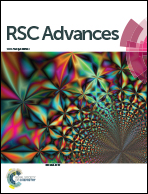Types, principle, and characteristics of tandem high-resolution mass spectrometry and its applications
Abstract
Tandem high-resolution mass spectrometry (THRMS) is an analytical technique that has arisen in recent years and is now widely used in pharmaceutical research and development (R&D; for example, for the identification of constituents in herbs and formulae, pharmacokinetics, omics, and drug degradation), food safety, environmental contamination and other research fields. Time of Flight (TOF) and Orbitrap are the most widely used mass analysers in THRMS, and the technical specifications vary among the different types of THRMS and even among the different manufacturers for a given type of analyser. In this article, we review the principle and functional characteristics of different types or models for THRMS and provide a brief description of its applications in the medical research, food safety, and environmental protection fields.


 Please wait while we load your content...
Please wait while we load your content...